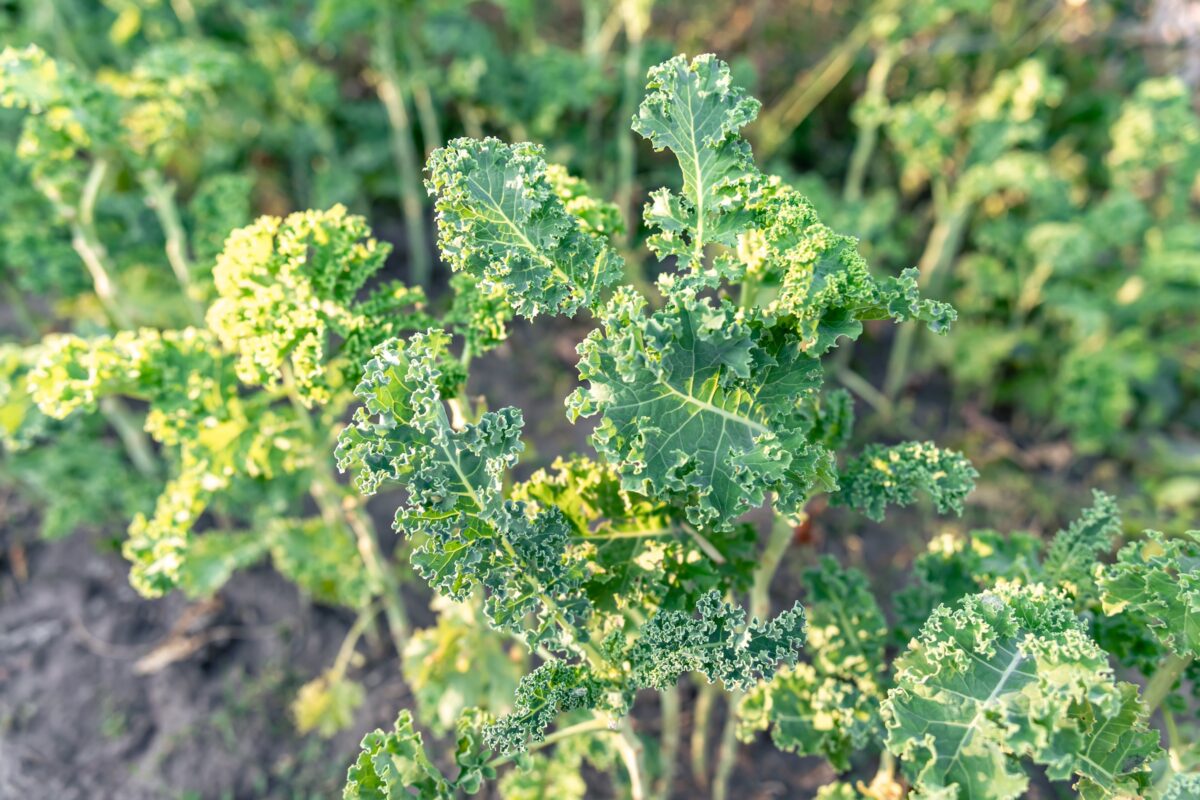by Bruce Bennett • You are probably seeing bare spots of soil that have already been harvested in your planting beds. But there are any number of veggies that can still be late-planted to fill those gaps and get you through the autumn and winter weather.
In general, vegetables that grow best in cooler weather are leafy greens, root crops and members of the cabbage (Brassicas/Cruciferous) family. They can all do well in our USDA Zones 7–9 late-season gardens. Think about adding beets, carrots, endive, kale, kohlrabi, leeks, lettuce, mustard greens, peas, radishes, turnips, spinach Swiss chard and oriental vegetables like Chinese cabbage and Bok choy.
All can be planted in August for autumn and winter harvesting. In addition, garlic can be planted as late as two to four weeks before the first frost and harvested the following summer. Shallots can be planted after the first frost. Don’t plant earlier because any top growth they may send up will be impacted by early autumn frosts.
The other great things about an autumn garden include the benefits of fewer plant-damaging pests and diseases around, fewer weeds to challenge your backs and knees, and the warm soil surrounding you. Plus, the autumn rains mean you won’t need to water as frequently, if at all. Some crops even taste better when subjected to some light frost.
Believe it or not, I think my autumn crops of lettuce, mesclun and Swiss Chard are better tasting than the ones I harvest in spring. Also, multicolored stemmed ‘Bright Lights’ Swiss Chard backed by ‘Red Sails’ Kale, makes a decorative planting whether or not you decide to eat them. I have had similar good results with fall plantings of Brussel sprouts which tend to be more tender and sweeter.
When shopping those on-sale seed racks, choose veggie varieties that are touted as “shorter or fewer days to harvest,” “for cooler temperatures” and “cold hardiness and quick maturity.” Being a good gardener also means being a good researcher. Read the fine print on the seed packs!
According to the WSU Extension, the average date for the first fall frost in western Washington is right around November 10. So, you have quite a bit of growing time left for vegetables that are planted in August. Spinach and other greens can even be planted in September. All the vegetables listed above can easily survive light frost if provided with some kind of protection, and some can even make it through all the way the cold winter weather. Remember that the Indian Summer weather which often follows the first frost is some of the best growing weather of the year for cool weather plants
When you hear about an impending frost, consider tossing a spun floating row cover (AKA Remay) over the new seedlings. Even plastic sheeting or old bed sheets can do the trick.
When planting seeds for your fall garden, keep in mind that growing conditions are different for summer plantings:
- Rains are usually still infrequent but heavier. Provide constant soil moisture for good germination and to get your plants well established.
- Plant seeds deeper than in the spring so they will be in a moister and cooler layer of the soil. It is also a good idea to shade newly emerging seedlings until most have germinated and matured to the point of having true leaves and/or the weather has cooled.
- Expect longer growing times. As temperatures drop, germination and growing times may increase. You might need to add a week or two to the expected time your harvests.
- Think about adding mulch to the growing beds. Mulch is an excellent autumn vegetable bed addition. It helps keep soils cool when falls are unseasonably warm and, then, insulates plant roots when frosts and cold weather do arrive.
- At the end of your extended growing season, or prior to the next traditional spring planting, remember to add your soil amendments. Compost and slow-acting organic fertilizer are beneficial for most planting beds to feed the plants, improve soil texture, feed the soil microbes and better retainment of moisture. Consider loosening the soil a bit if it became compacted over the previous growing season.
These easy steps can add a new gardening experience (and a tasty one at that!) to any gardener’s repertoire of horticultural skills. Could you be the only house or condo on the block who can still say, “Why, yes, this is from my over-producing garden” in the months of December or January? Show the neighbors that you are “the one” to talk to about their gardening questions and bask in the glory of the autumn sunshine.
Happy gardening, all!
Additional Reading
Forkner, Lorene E. Guide to Vegetable Gardening in the Pacific Northwest. 2013. Portland, OR: Timber Press.
Taylor, Lisa (ed). Maritime Northwest Garden Guide. 2014. Seattle, WA: Tilth Alliance.
Thorness, Bill. Cool Season Gardner. 2013. Seattle, WA: Skipstone.
Contributing columnist, Bruce Bennett, is a WSU Certified Master Gardener, Certified Professional Horticulturalist and lecturer. If you have questions concerning this article, contact him at gardenguy4u@gmail.com.
Image by pvproductions on Freepik


